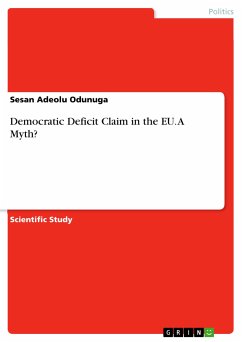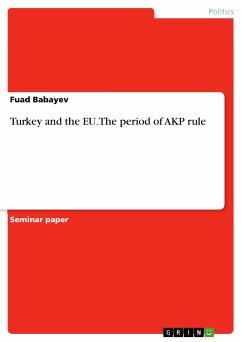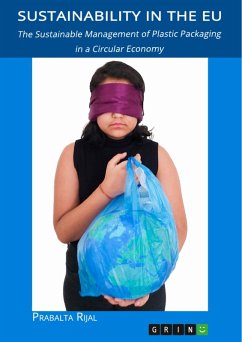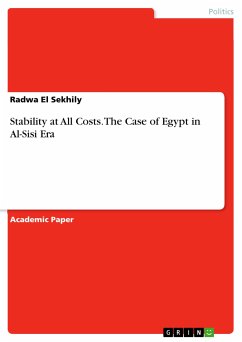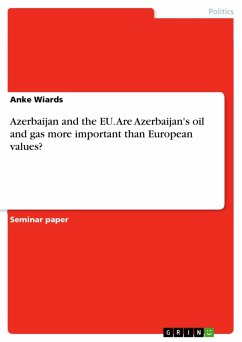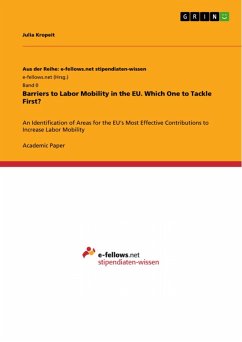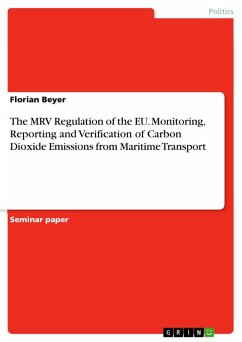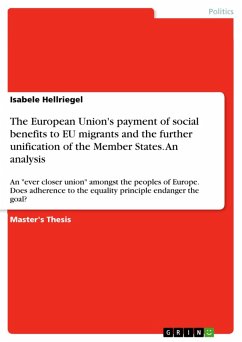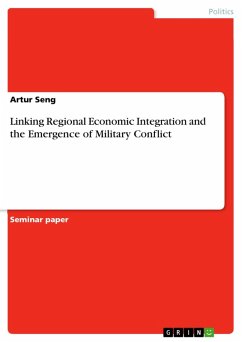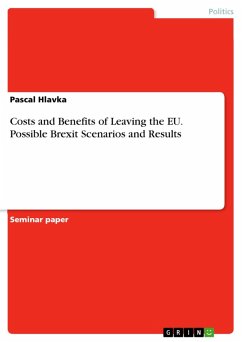
Costs and Benefits of Leaving the EU. Possible Brexit Scenarios and Results (eBook, PDF)

PAYBACK Punkte
0 °P sammeln!
Seminar paper from the year 2021 in the subject Politics - Topic: European Union, grade: 1.7, LMU Munich, language: English, abstract: This paper outlines different approaches with the aim of analysing the robustness of outcomes of the Brexit in varying model assumptions. The paper first is concerned with the methodology and gives a brief overview of the possible Brexit scenarios and summarizes the results and the appropriate robustness checks estimated by Dhingra et al. (2017). Section 5 begins by laying out theoretical approaches of the research and discusses how the results change as the mo...
Seminar paper from the year 2021 in the subject Politics - Topic: European Union, grade: 1.7, LMU Munich, language: English, abstract: This paper outlines different approaches with the aim of analysing the robustness of outcomes of the Brexit in varying model assumptions. The paper first is concerned with the methodology and gives a brief overview of the possible Brexit scenarios and summarizes the results and the appropriate robustness checks estimated by Dhingra et al. (2017). Section 5 begins by laying out theoretical approaches of the research and discusses how the results change as the models extend by GVC and network effects. Over the past century, there has been a dramatic increase in economic integration. Policy makers continued signing trade agreements after decades of war and political isolation. In 2016, the British decided to leave the EU and initiated a turnaround in political framework. Recent developments in Europe signal that the EU could be under pressure if the consequences of leaving the EU are insignificant. Therefore, these developments have heightened the need for scientific studies on trade integration and trade disperse. The individual per capita benefits of trade liberalisation have been studied by many researchers. There is a growing body of literature that recognises new quantitative trade models and fill them with the latest input output data.
Dieser Download kann aus rechtlichen Gründen nur mit Rechnungsadresse in A, B, BG, CY, CZ, D, DK, EW, E, FIN, F, GR, HR, H, IRL, I, LT, L, LR, M, NL, PL, P, R, S, SLO, SK ausgeliefert werden.




